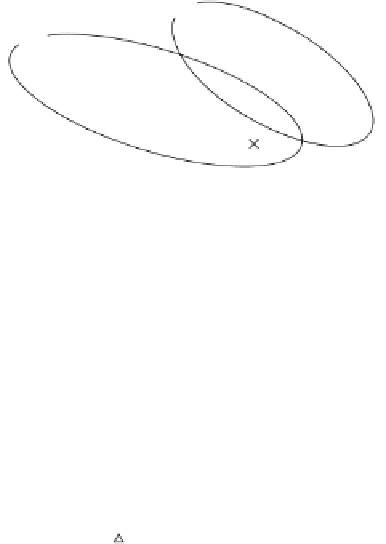Biomedical Engineering Reference
In-Depth Information
300
Beech (axial)
Poplar (axial)
Mahogany (axial)
Red oak (axial)
(a)
250
Sapele (axial)
200
MSA model
UDP
150
NUDP
100
50
0
40
45
50
55
60
65
Porosity (%)
120
(b)
Beech (radial)
Poplar (radial)
Poplar (tangential)
Mahogany (radial)
Mahogany (tangential)
Red oak (radial)
Red oak (tangential)
100
80
Sapele (radial)
Sapele (tangential)
60
MSA model
40
20
0
40
45
50
55
60
65
Porosity (%)
Figure 11.15.
Elastic modulus as a function of porosity for: (a) axial; and (b) tangential and
radial orientations with UDP and NUDP bioSiC grouped in the axial plot (error bars equal one
standard deviation). Values predicted by the MSA model for both orientations are shown by
dashed lines.
materials is plotted as relative strength,
σ
c
/
σ
ys
(where
σ
c
is the strength of the
porous solid and
ys
is the strength of the fully dense material), versus SiC volume
fraction. The strength data of the fully dense sintered SiC, measured under the
same experimental conditions, is taken from a previous work [Muñoz, 2002]. For
every material, the average of the relative strength was taken, and the scatter is
indicated with the error bars. The compressive strength of BioSiC was measured
in the axial and radial orientation. It was up to six times larger when the com-
pression was parallel to the axial direction, indicating the importance of the
σ























Search WWH ::

Custom Search